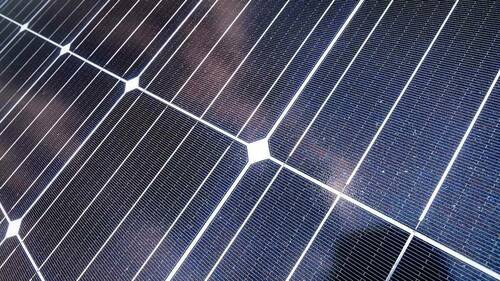
Indiana Michigan Power (I&M) broke ground recently on a $37 million solar project that will provide clean energy credits equal to 10 percent of the University of Notre Dame’s total demand for electricity, helping the University meet its goals around clean, renewable energy.
“This is the next big step for us with regard to the use of clean, renewable solar energy to aid or offset campus power production, and a piece of a larger puzzle in terms of our overall approach to sustainability,” said Paul Kempf, assistant vice president for utilities and maintenance at Notre Dame. “We’re pleased to partner with I&M on this project, and look forward to the benefits it will provide.”
Crews started driving posts into the ground in the area of Cleveland and Bittersweet roads, along the Indiana Toll Road in northeast St. Joseph County, to support the 57,000 photovoltaic panels that will make up the 200-acre St. Joseph Solar Farm.
Designed to be I&M’s largest solar project, the 22,000-kilowatt facility will power the equivalent of 2,700 homes annually, providing clean energy options to local consumers and helping to attract environmentally minded businesses to the area. It will also provide educational opportunities for local youths and adults, including K-12 and college students.
As a partner in the project, Notre Dame has committed to purchase 40 percent of total output from the facility in the form of clean energy credits over 30 years, equal to about 10 percent of the University’s overall electrical usage. The credits will be used to offset carbon emissions on campus, where the University has pledged to reduce such emissions by 50 percent based on 2005 levels by 2030.
Work on the facility, which will be solely owned and operated by I&M, is expected to wrap up in the spring.
“This partnership enables us to meet our goals around sustainability, and one of those goals is to generate at least 10 percent of our energy from renewable or recoverable sources,” said Carol Mullaney, senior director of sustainability at Notre Dame.
“I&M is pleased to partner with the University of Notre Dame on the St. Joseph Solar Farm, which will build upon local green energy in the area and assist on economic development efforts to attract businesses looking for renewable energy options,” Toby Thomas, I&M president and chief operating officer, said. “I&M is dedicated to transforming our energy generation fleet for our customers and the communities we serve. This facility will provide boundless clean energy options for the area and educational opportunities for future generations.”
Notre Dame currently maintains three solar arrays separate from I&M: a 10-kilowatt array atop Fitzpatrick Hall, a 50-kilowatt array atop Stinson-Remick Hall and a 140-kilowatt array on Kenmore Street in South Bend. The Kenmore array provides one-third of the power for an adjacent warehouse, which the University uses primarily for storage.
All are part of a long-term strategy to improve sustainability campuswide, consistent with the University’s Catholic mission and values and the pope’s encyclical on climate change, which calls for “swift and unified global action” on the issue.
Last year alone, the University partnered with Grind2Energy and Homestead Dairy to convert food waste to energy, commissioned a new geothermal heating and cooling plant and broke ground on a hydroelectric facility at Seitz Park in South Bend. The hydro facility will meet 7 percent of the University’s electrical needs and offset nearly 9,700 tons of carbon dioxide annually.
“All these projects — and other projects like conservation projects and energy efficiency projects — are working together to reduce our carbon footprint, with the long-term goal of trying to get to carbon neutral,” said Kempf.
For more information, visit green.nd.edu.
Contact: Erin Blasko, assistant director of media relations, 574-631-4127, eblasko@nd.edu